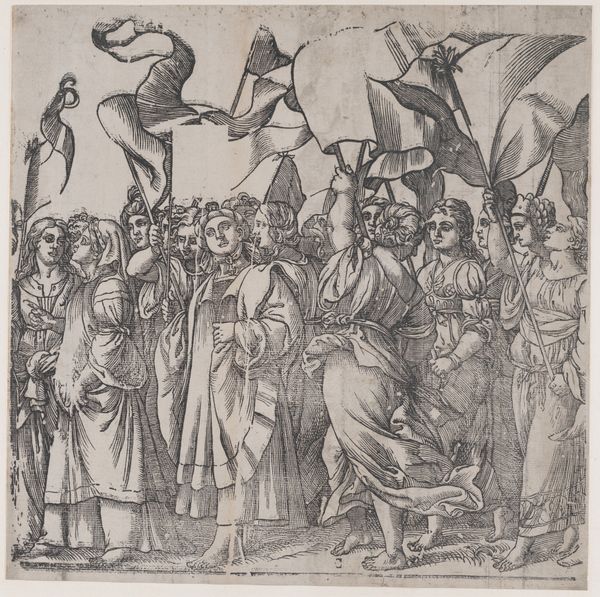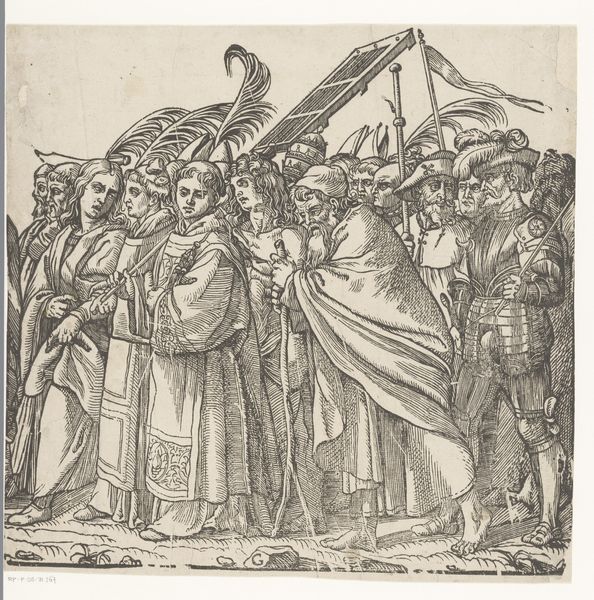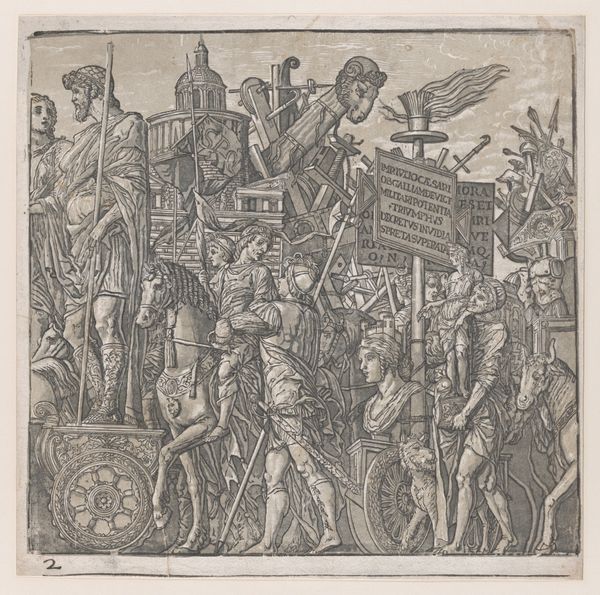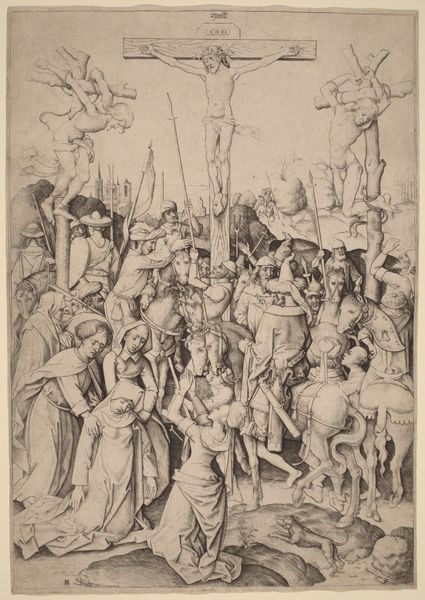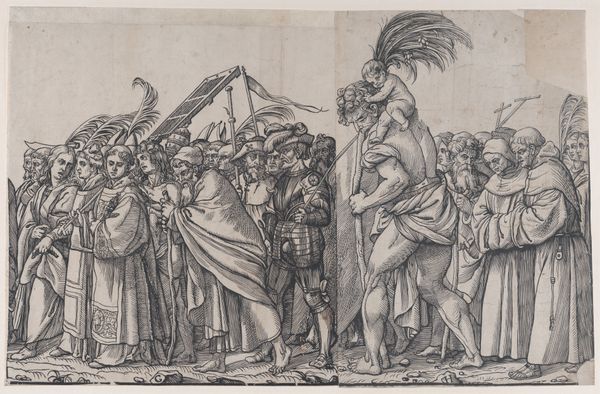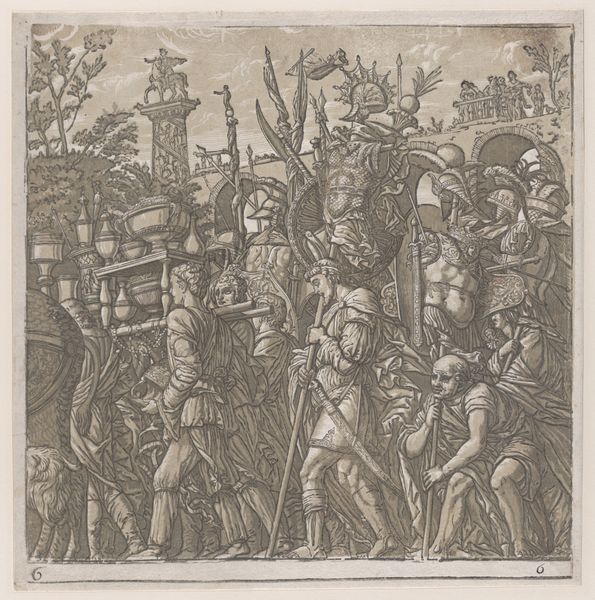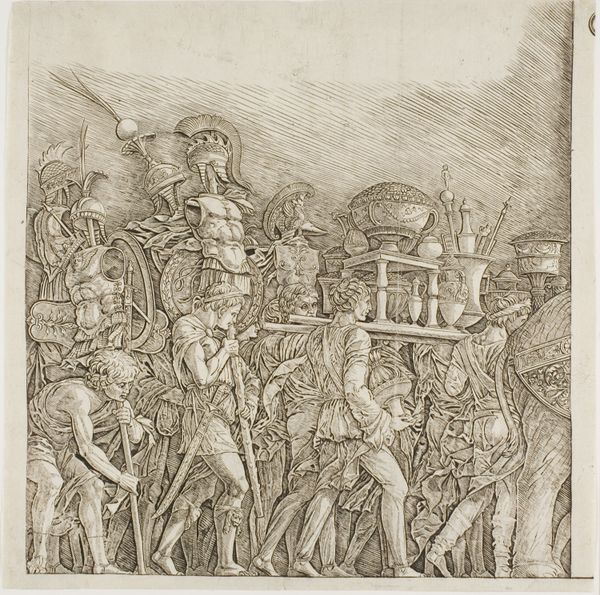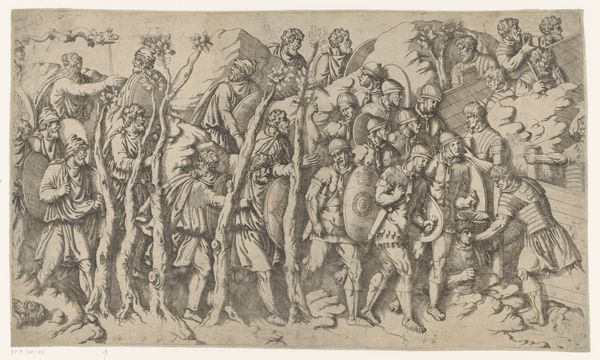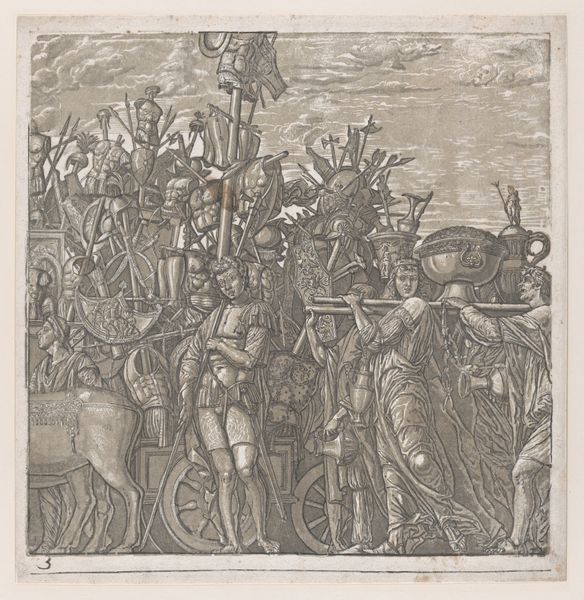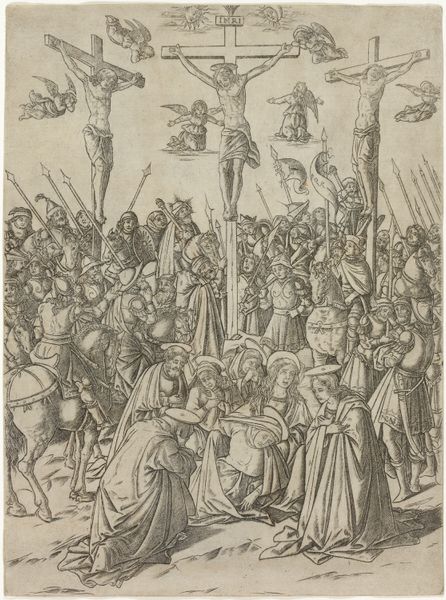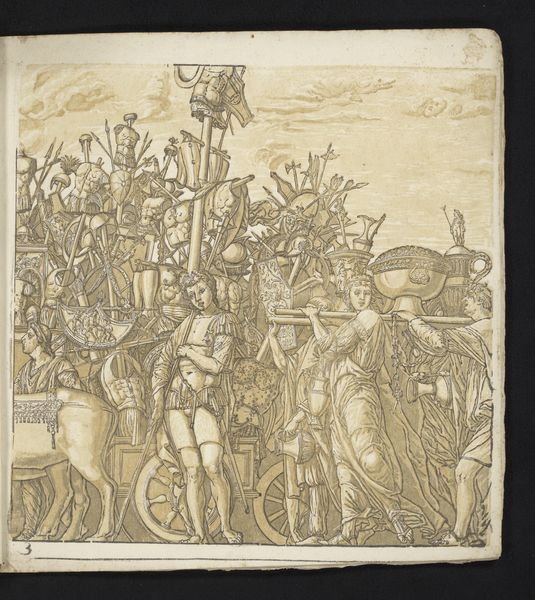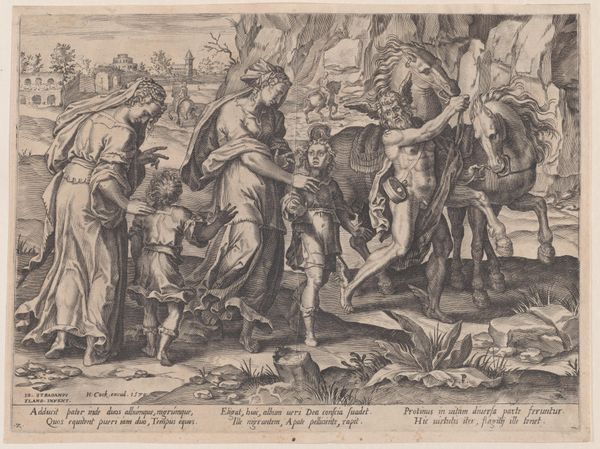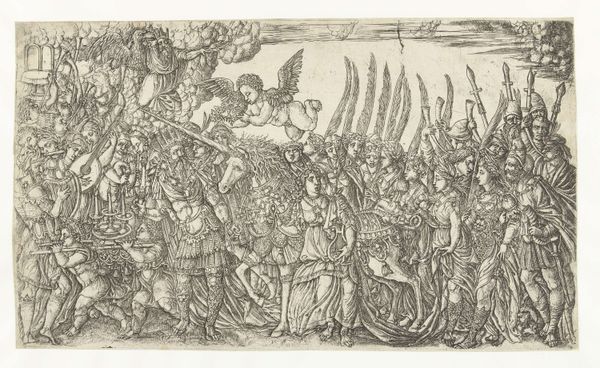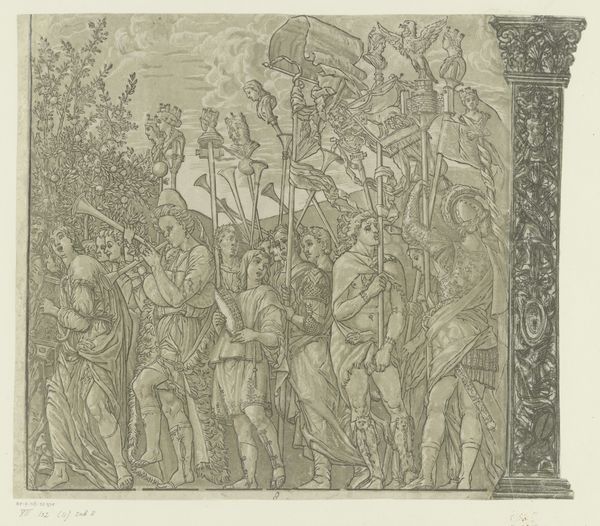
print, engraving
# print
#
figuration
#
line
#
history-painting
#
italian-renaissance
#
engraving
Dimensions: height 388 mm, width 393 mm
Copyright: Rijks Museum: Open Domain
Editor: This print, "Triumph of Christ (Part Three)", was created by Andrea Andreani sometime between 1568 and 1629. The Italian Renaissance engraving at the Rijksmuseum depicts a procession, perhaps celebratory or religious. What strikes me is the somewhat…stiff formality of the figures despite their movement. What’s your read on this, particularly within its historical context? Curator: Stiff, yes, but also strangely serene. Don’t you think they appear like players on some monumental stage? Andreani has presented them almost as archetypes, embodiments of faith, of followership. I wonder what narrative he was hoping to portray using such seemingly static, posed figures. I find myself curious as to what other historical events or pieces he was referencing with this engraving. Does it spark any particular visual association for you? Editor: Hmm… now that you mention it, there is a theatrical feel. Perhaps even the formality contributes to this impression. Given the religious theme, do you see any connection with the "Triumph of Caesar" prints from earlier in the Renaissance? Curator: Precisely! Those earlier triumphal processions were all the rage. But, shifting the focus to Christ? Now, that’s a powerful statement. Andreaiani has cleverly appropriated and re-contextualized the Roman triumphal image as Christian exaltation! By swapping Caesar with Christ, the artist comments, critiques, or glorifies! What do you see? A devout display? Political maneuvering? A little of both, maybe? Editor: Interesting, viewing it as both devotional and possibly a statement does open new paths to think about this artwork. The cross-cultural references and blend of artistic vision certainly adds a layer of complexity. Curator: Indeed, and complexity often holds the most beauty! These historical visual cues can lead to incredible revelations about not just art, but history!
Comments
No comments
Be the first to comment and join the conversation on the ultimate creative platform.
